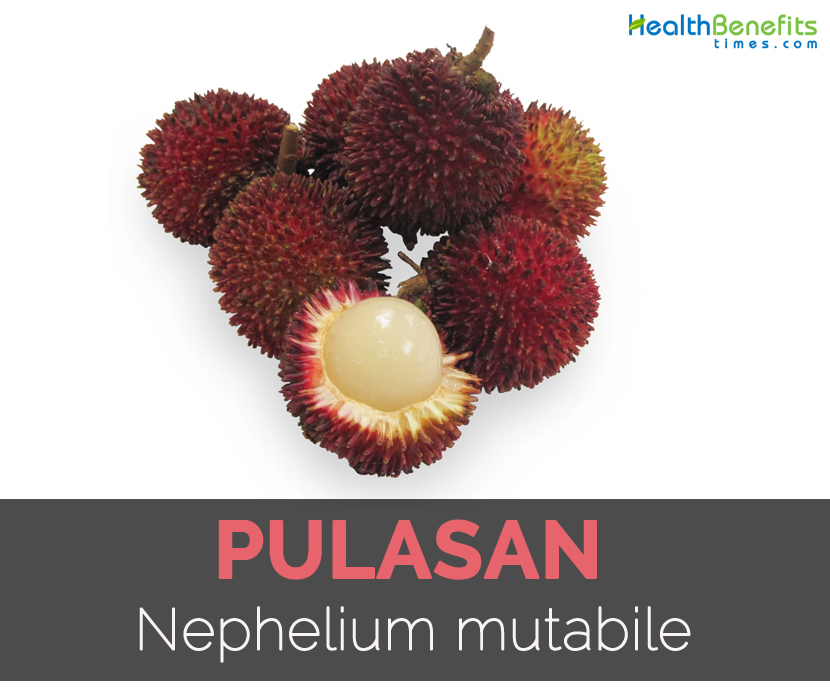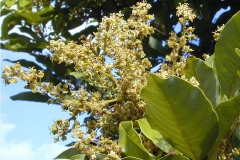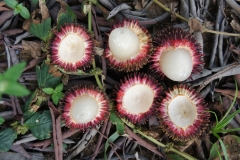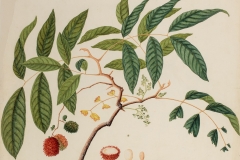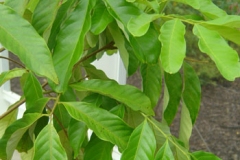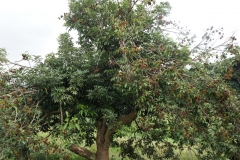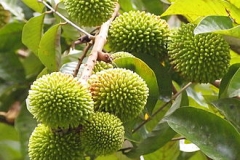Health Benefits of Pulasan
- Lose weight
This fruit is helpful for those who wants to shed extra pounds from the body. It is due to high content of dietary fiber that makes one feel heavier in the stomach. It also helps to suppress hunger effectively.
- Control blood sugar levels
This fruit is helpful for diabetic patients as well. It manages sugar levels by regulating amount of sugar that is released into bloodstream.
- Bowel movement
Dietary fiber is essential for digestion and crucial for promoting regular bowel movement. It also prevents constipation.
- Anti-aging
The fruit has Vitamin C that is crucial for making one to look younger than actual age. It also eliminates free radicals by protecting skin cells.
- Acts as antioxidant
This fruit has hydroquinone, ascorbic acid and pyrogallol in the fruit that acts as potent antioxidants which eliminates free radicals from the body.
Traditional uses
- Roots are used for treating fevers.
- Use the root decoction for treating fevers.
Culinary uses
- Consume the fruit raw or make jams and compotes.
- Use the seeds to extract oil.
- Dry or frozen it and use it to flavor puddings and ice cream.
- Made it into jellies, jams, preserves and sauces.
- Seeds are boiled or roasted and used for preparing cocoa like beverage.
References:
https://en.wikipedia.org/wiki/Pulasan
https://pfaf.org/user/Plant.aspx?LatinName=Nephelium+ramboutan-ake
http://homegrown.in/pdf/Pulasan_E.pdf
https://hort.purdue.edu/newcrop/morton/pulasan.html
Comments
| Pulasan Quick Facts | |
|---|---|
| Name: | Pulasan |
| Scientific Name: | Nephelium mutabile |
| Origin | Peninsular Malaysia |
| Colors | Dark red |
| Shapes | Ovoid, ellipsoid to subglobular schizocarp, up to 7 x 5 cm |
| Flesh colors | White or creamy-white |
| Taste | Sweet |
| Name | Pulasan |
|---|---|
| Scientific Name | Nephelium mutabile |
| Native | Peninsular Malaysia |
| Name in Other Languages | Indonesia: kapulasan; Thailand: ngoh-khonsan; Brunei: maritam; Philippines: panungayan; English: ramboostan, rambutan; Filipino: usan, rambutan; French: litchichevelu; German: Rambutan; Indonesian: chorogol, gente, rambutan, kakapas; Khmer: saaw maaw, ser mon; Malay: rambutan, buah abong, rangalau; Mandarin: hooun mo daon shau tsz; Swahili: mshokishoki; Thai: phruan ngoh, ngoh paa, ngoh; Vietnamese: vai thieu, saaw maaw, chom chom |
| Plant Size | 10 – 15 m in height, up to 80 cm in bole diameter |
| Leaf | Alternate, pinnate, elliptic-oblong, oblong and dark green |
| Flowering Season | February/March |
| Fruit shape & size | Ovoid, ellipsoid to subglobular schizocarp, up to 7 x 5 cm |
| Fruit weight | 20-95 g |
| Fruit color | Dark red |
| Pulp | White or creamy-white and translucent |
| Seed | Ovoid, oblong or ellipsoidal and light brown |
| Fruit Taste | Sweet |
| Flavor | Mild |
| Fruiting season | Late April to May |


